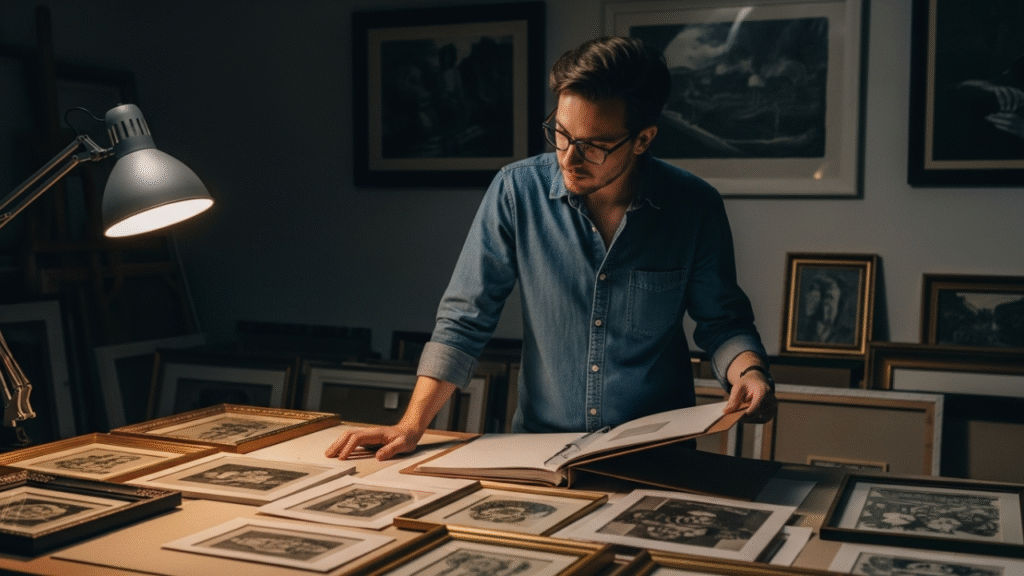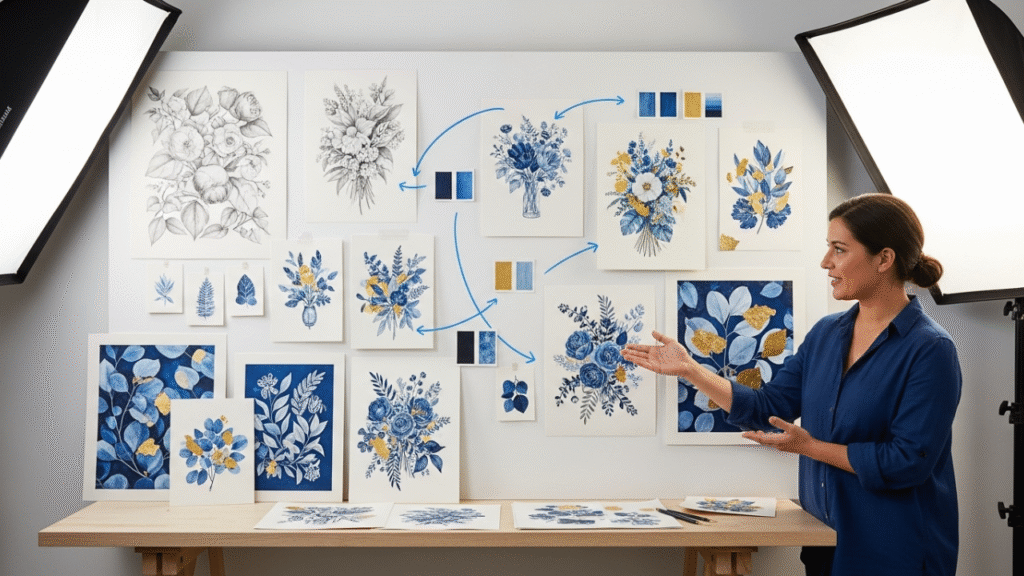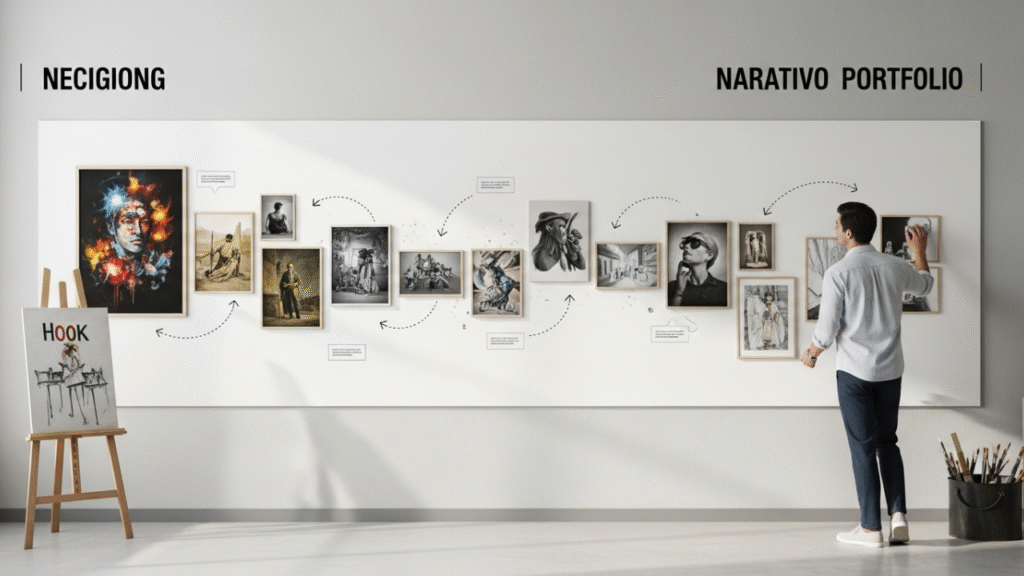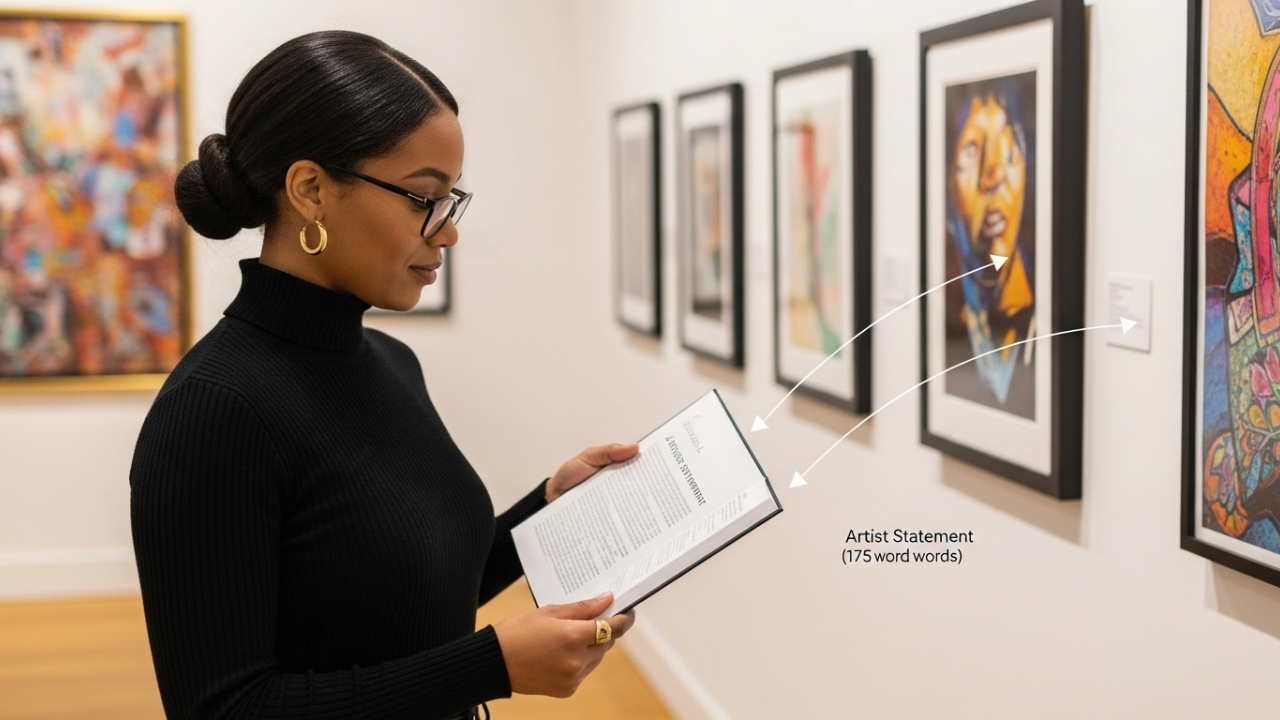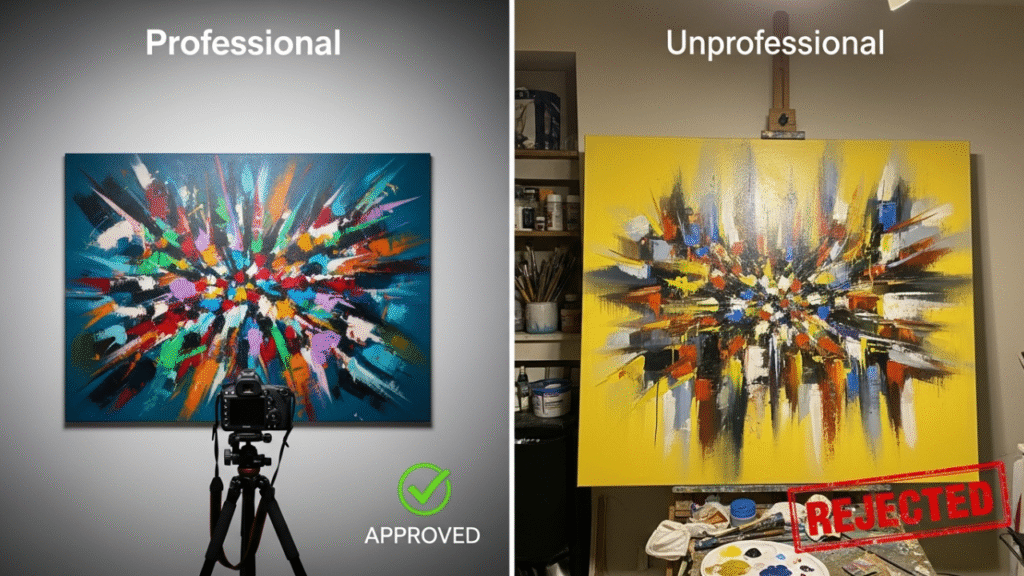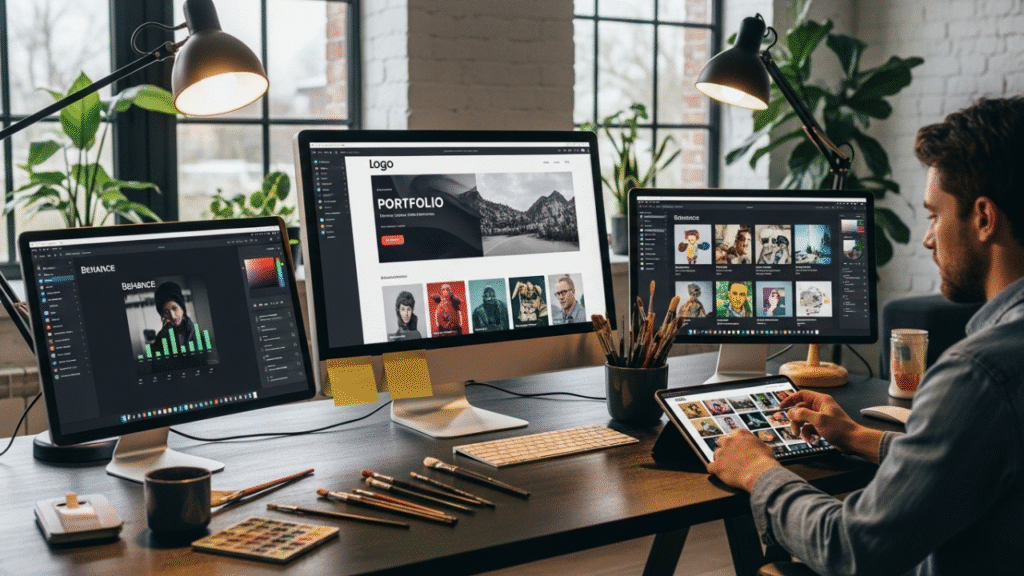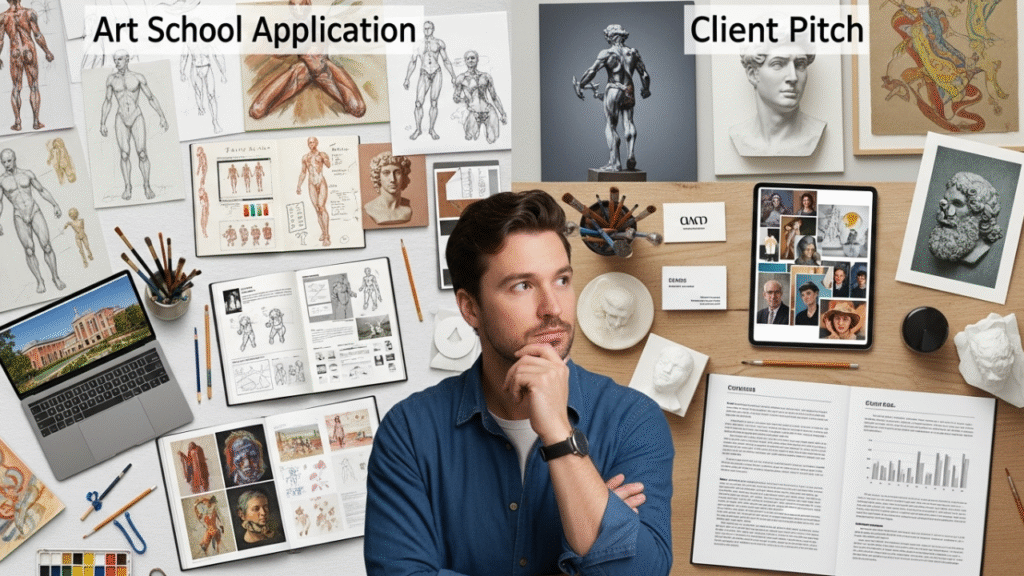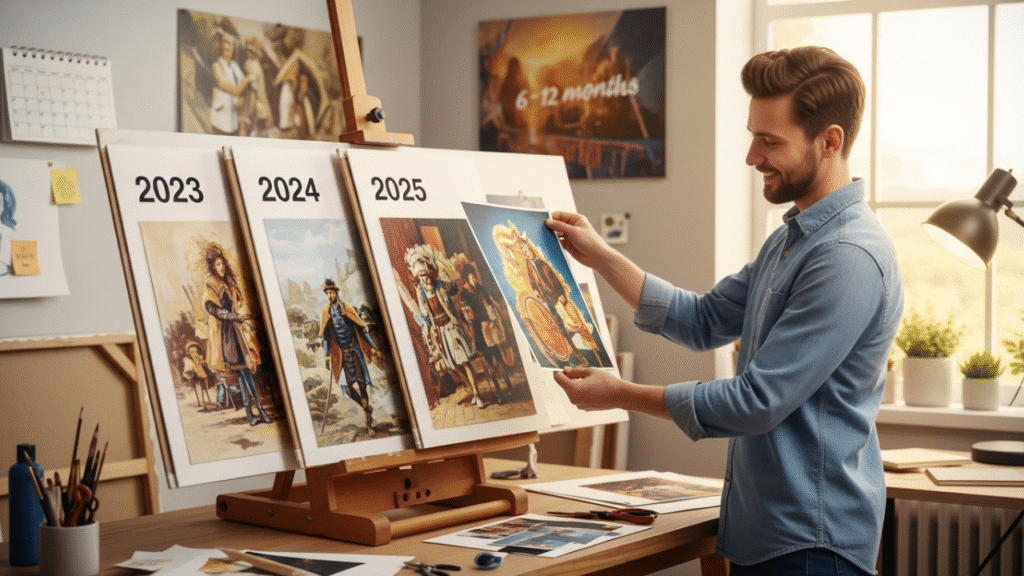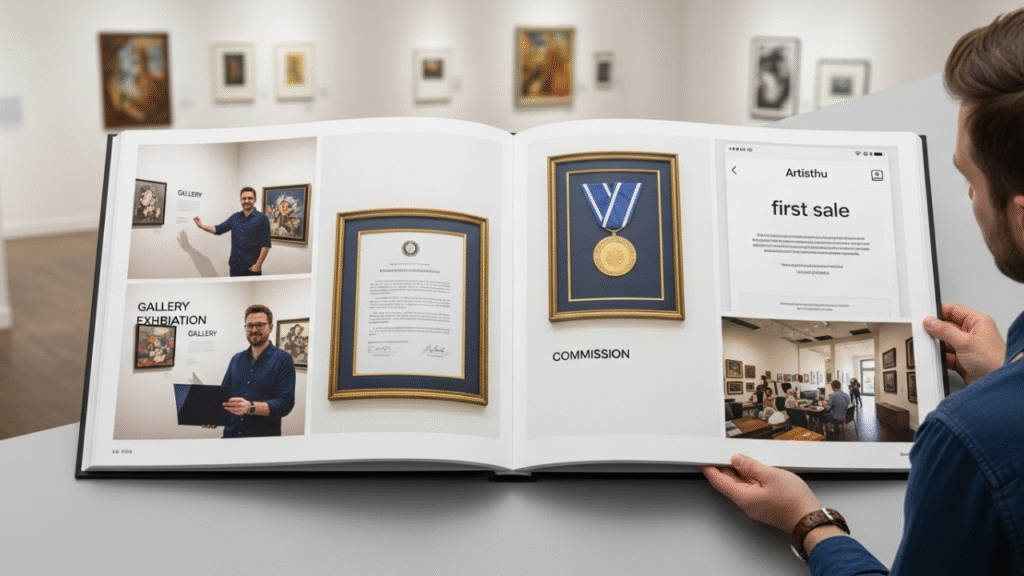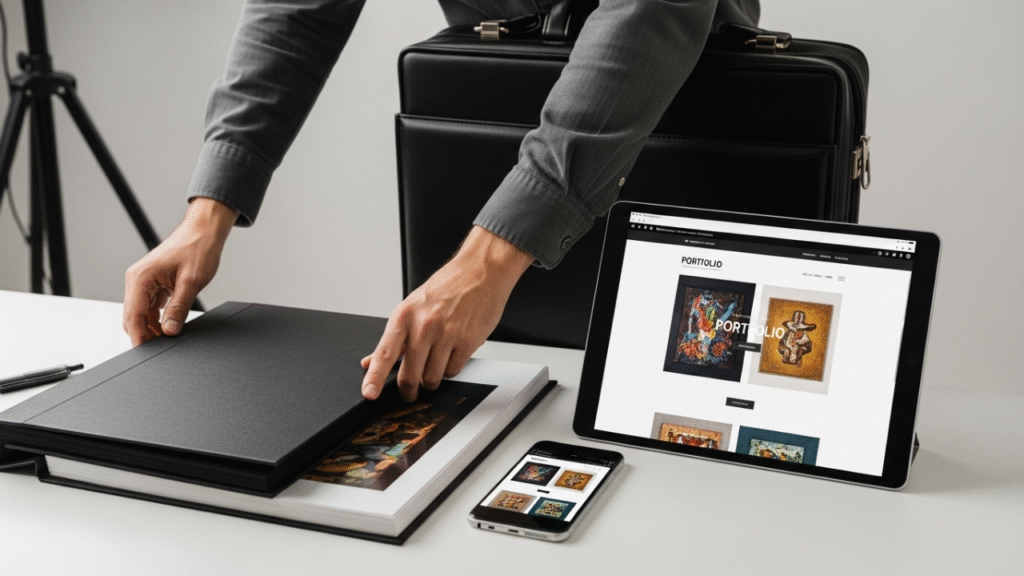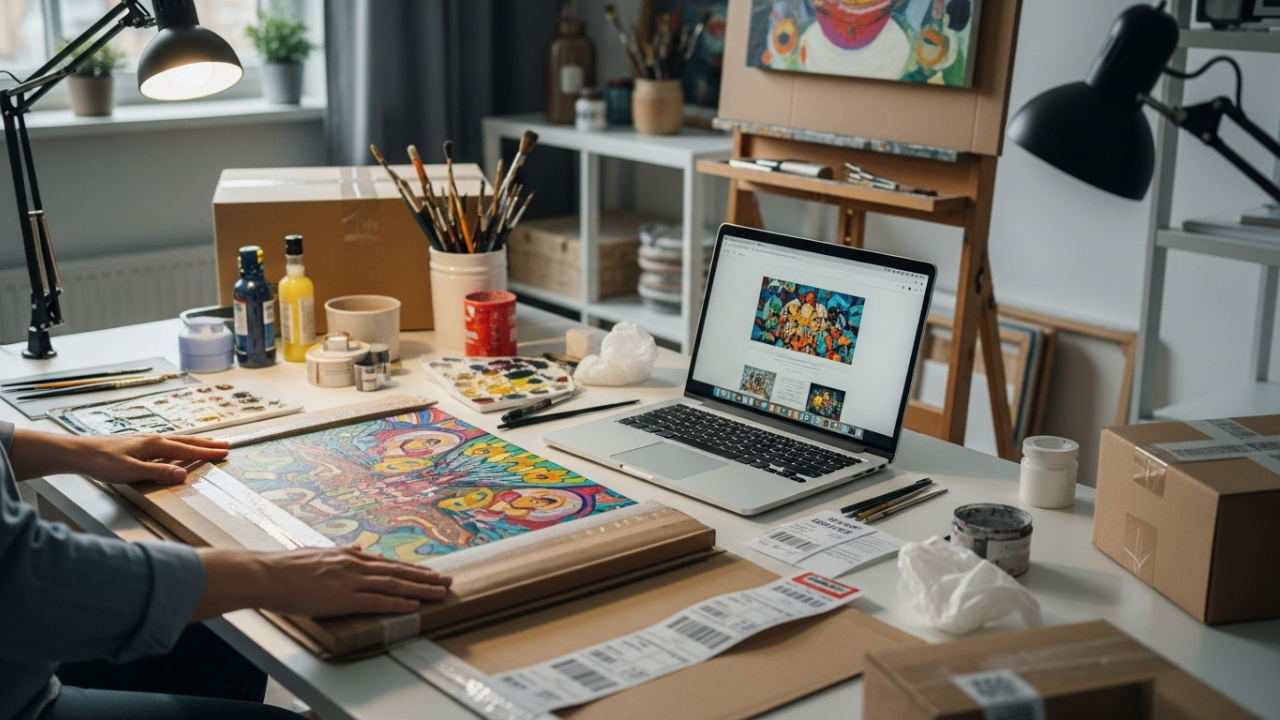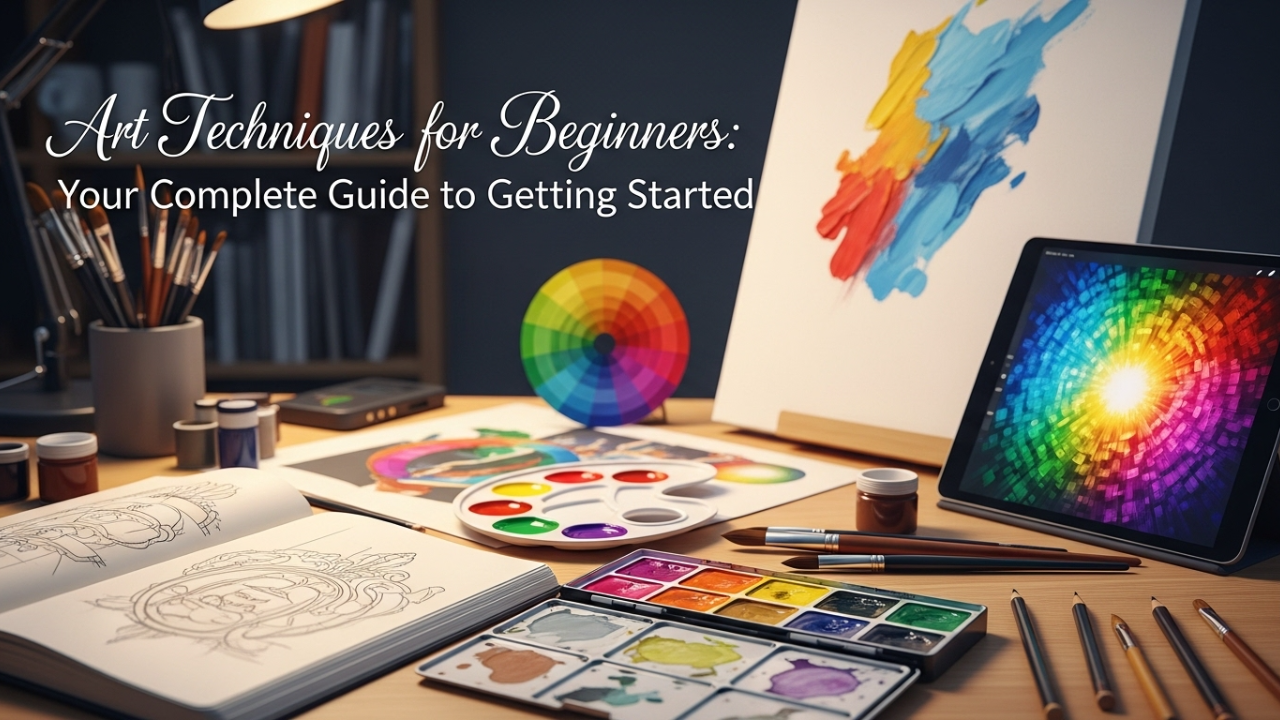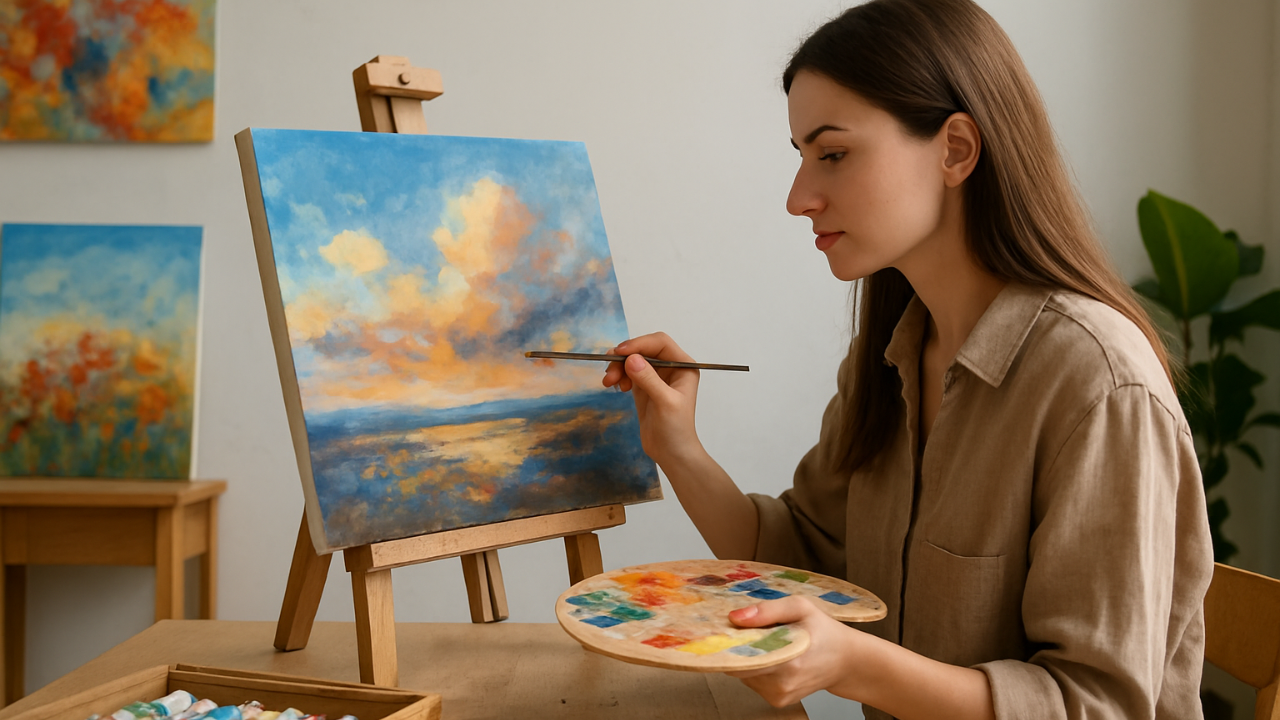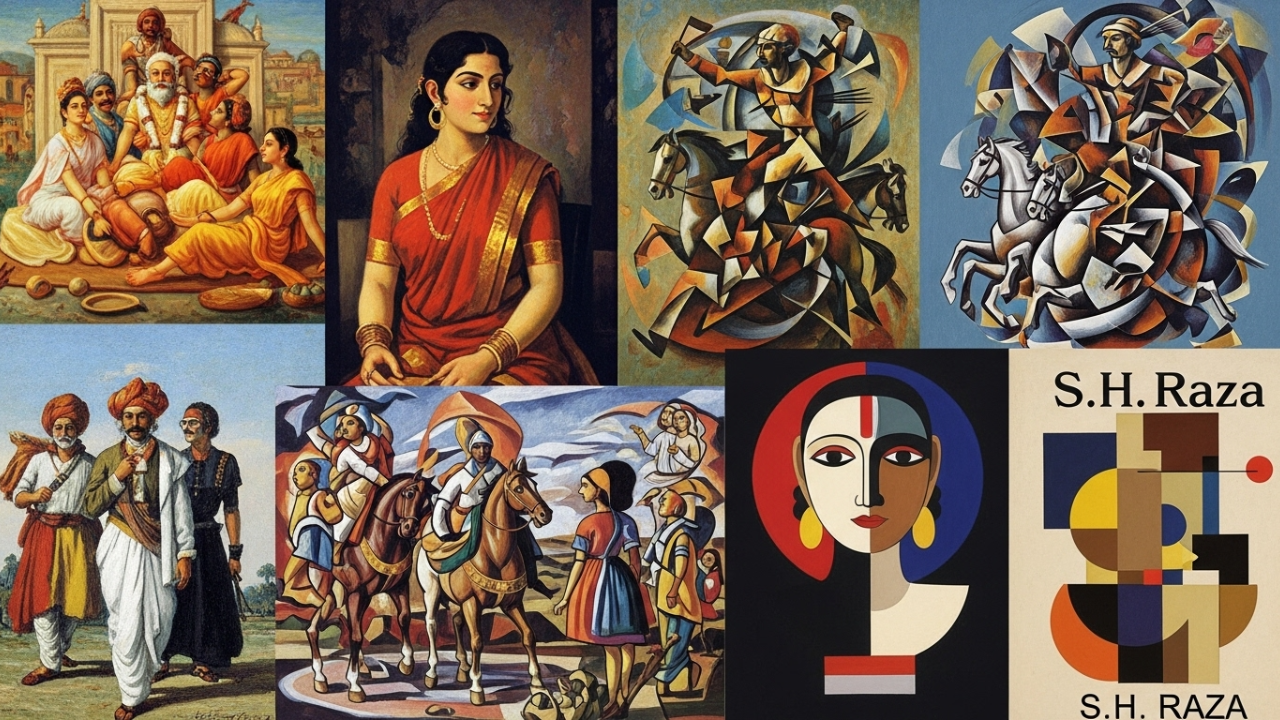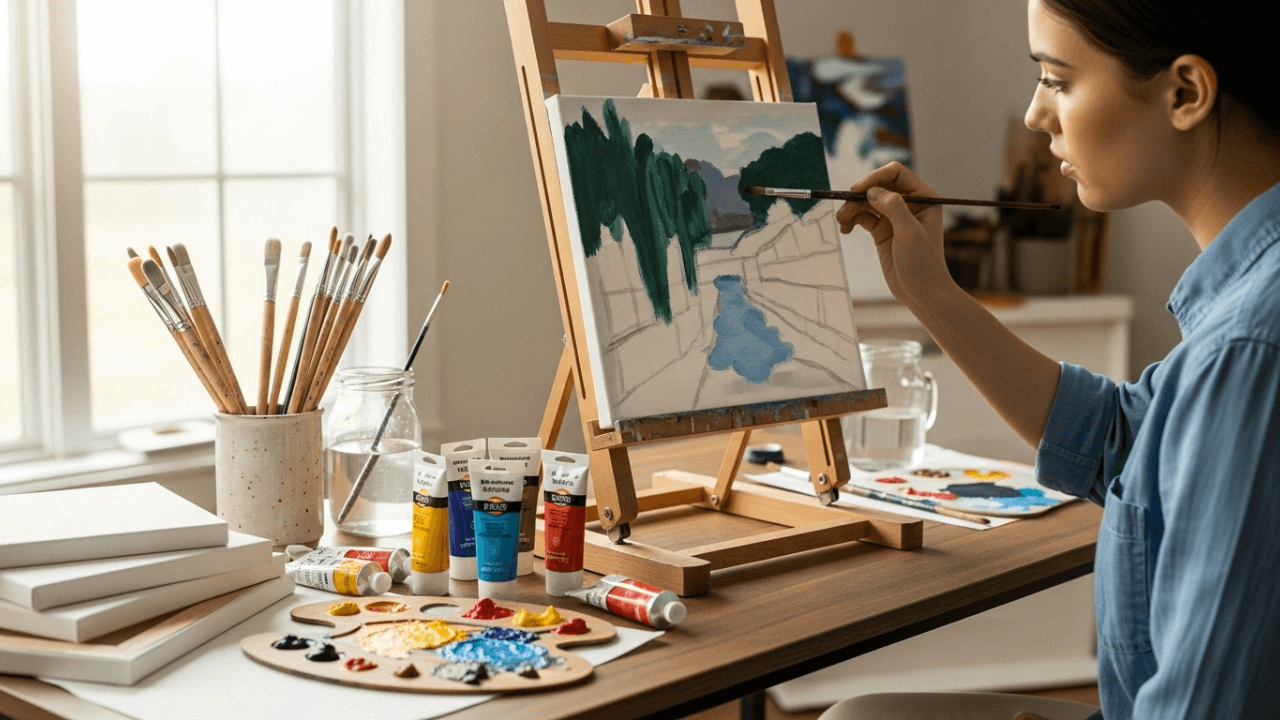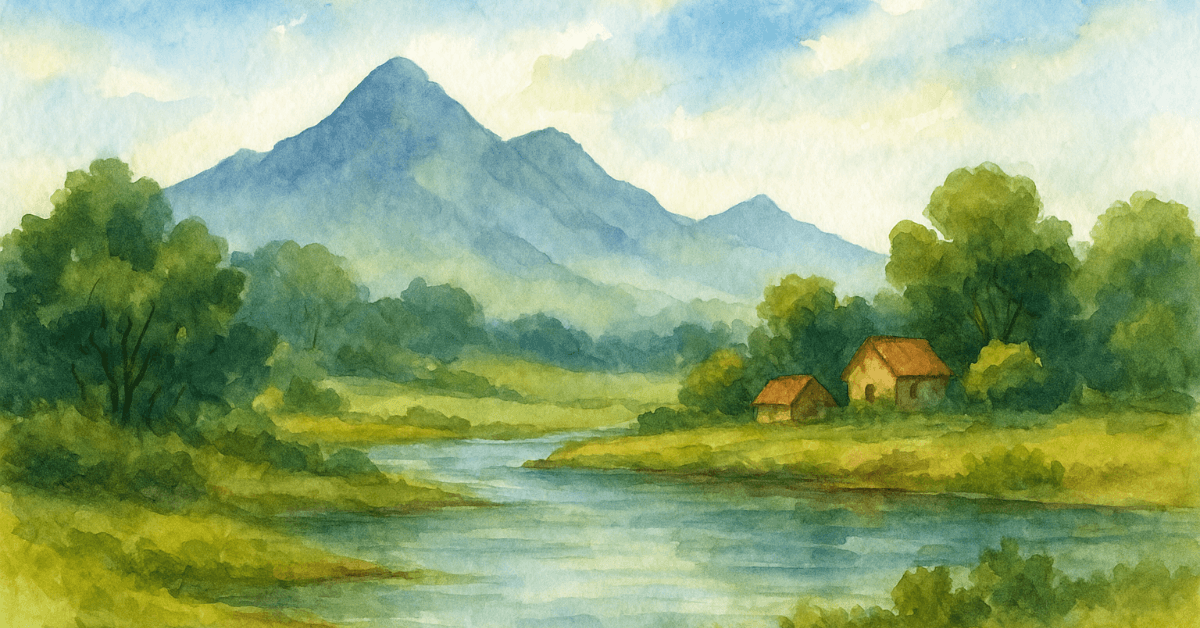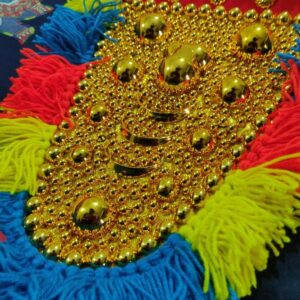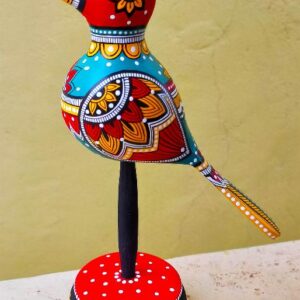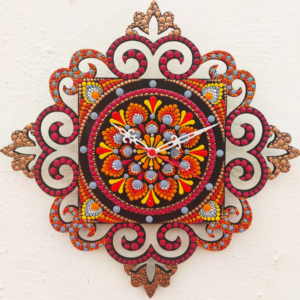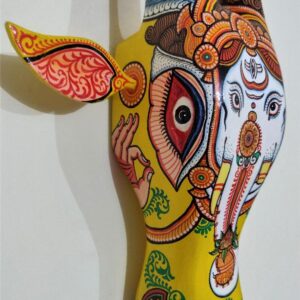
About the Author
Mohd Amaan
Mohd Amaan is an Artist, Writer & Creative Expert at Artisthu. He blends fine art with modern design and storytelling, helping creators present their work beautifully and effectively online.
Table of Contents
ToggleTop 10 Portfolio Tips for Beginner Artists
For beginner artists, creating a portfolio is one of the most important steps toward building a professional career. A portfolio is more than a collection of artworks—it is your identity, your resume, and your opportunity to showcase your skills to galleries, clients, and art schools. In this guide, we’ll cover the top 10 portfolio tips for beginner artists to help you build a portfolio that stands out and gets noticed.
1. Select Only Your Best Work
One of the most important portfolio tips for beginner artists is to avoid including every artwork you’ve ever made. Instead, focus on quality over quantity. A strong beginner artist portfolio should highlight only your best and most representative works. Choose 10–20 of your strongest pieces that highlight your skills and unique style. Ask yourself: Does this piece represent my artistic identity? If the answer is no, leave it out.
2. Show Variety Without Losing Focus
One of the essential portfolio tips for beginner artists is to show variety in your work without losing focus. A beginner artist portfolio should include sketches, digital illustrations, and paintings, but all should still reflect your unique artistic identity. However, don’t make it look scattered. Maintain a central theme that reflects your artistic voice. For example, you can explore different subjects but keep your color palette or style consistent.
3. Arrange Your Portfolio Like a Story
Think of your portfolio as a narrative. Begin with your strongest work to grab attention, follow with works that show your growth, and close with recent pieces. A logical flow helps viewers understand your journey as an artist rather than seeing a random collection.
4. Write an Artist Statement
Among the most overlooked portfolio tips for beginner artists is writing a clear artist statement. This short note adds context to your portfolio, explaining your inspirations, creative process, and goals—helping galleries and clients connect with your art on a deeper level. Keep it short (150–200 words) but powerful. If you struggle with writing, you can use tools like the Artist Bio Generator to create a professional introduction.
5. Use High-Quality Images
Good presentation can make or break your portfolio. If your work is physical, take high-resolution photos in proper lighting. Crop and edit them to remove distractions. Galleries and clients often reject portfolios simply because the images look unprofessional.
6. Build a Digital Portfolio
In today’s world, an online portfolio is a must. Use platforms like Behance, Wix, or create your own website. A simple site on Artisthu can give you a professional presence. You can even use the Artist Name Generator Tool to come up with a memorable identity for your online portfolio.
When it comes to building a professional portfolio, beginner artists often struggle with structure and presentation. Thankfully, there are many resources available online to guide you through the process. For example, Wix has published a detailed guide on how to make an art portfolio that explains everything from choosing the right format to designing a visually appealing layout. Combining such expert advice with these portfolio tips for beginner artists will help you create a portfolio that stands out in both traditional and digital spaces.
7. Customize for Each Opportunity
One of the smartest portfolio tips for beginner artists is to customize your portfolio for each opportunity. If you’re applying to art school, add sketch studies and fundamentals. If you’re targeting clients, include artworks that align with their needs. Don’t use the same portfolio for every purpose. If you are applying to an art school, include sketches, anatomy studies, and process work. If you are targeting clients, highlight works that align with their needs. Customization shows you understand your audience and take your career seriously.
8. Keep It Updated Regularly
Your portfolio should evolve as your art does. Update it every 6–12 months by adding new works and removing outdated ones. Think of it as a living document that grows with your skills. A portfolio from two years ago may no longer reflect your current abilities.
9. Include Achievements and Projects
A portfolio isn’t just about showing artwork. Add details about exhibitions, workshops, or commissions you’ve worked on. Even small achievements like selling your first piece on Artisthu are worth including. These extras make your portfolio more professional and credible.
10. Balance Digital and Physical Portfolios
While digital portfolios are essential, a physical version still has value—especially for interviews or gallery visits. Invest in a clean binder or folder with printed works. Having both options makes you prepared for any opportunity.
FAQs on Portfolio Tips for Beginner Artists
1. How many artworks should a beginner artist include in a portfolio?
Between 10–20 pieces are ideal. Too many works can overwhelm the viewer, while too few may not represent your skills fully.
2. Should I include unfinished artworks in my portfolio?
Only include finished works. However, for art school applications, you may add a few sketches or process shots to show your creative development.
3. Do I really need a website for my portfolio?
Yes, in today’s digital world, a website adds professionalism. Platforms like Wix or Artisthu make it simple for beginners to build one without coding.
4. How often should I update my portfolio?
At least once a year. Update it every time you feel your skills have improved or when you have new projects worth showcasing.
5. How can I make my portfolio stand out?
Focus on presentation. Use high-quality images, keep the layout clean, and add a short artist statement. Storytelling and consistency make a big difference.
Conclusion
For beginner artists, a portfolio is the bridge between passion and opportunity. By following these top 10 portfolio tips for beginner artists—from selecting your best works and writing an artist statement to balancing digital and physical portfolios—you can create a portfolio that reflects your unique style and attracts attention.
Remember, a portfolio is never finished. It grows as you grow. Stay consistent, update regularly, and use digital tools to stand out in today’s competitive art world. Your portfolio is your story—make it unforgettable.

Written by: Mohd Amaan

